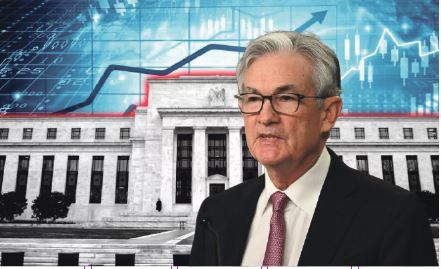Goa is abuzz with excitement as vintage bike and car owners, users, collectors and fans are decking […]

US FEDERAL RESERVE KICKS OFF!By Asma Torgal
In the News, Sep 21- Sep 27 2024 September 20, 2024IN a significant shift in monetary policy, the US Federal Reserve has launched an anticipated series of interest rate cuts, reducing its benchmark rate by a substantial 50 basis points. This reduction brings the federal funds rate to a range of 4.75% to 5.00%. Fed Chair Jerome Powell emphasized the cut reflects the Central Bank’s commitment to maintaining low unemployment as inflation shows signs of easing.
“We made a strong start and I am very pleased with our decision,” Powell stated at a press conference. The move marks the first dissent within the Federal Open Market Committee since 2005, with Governor Michelle Bowman advocating for a smaller quarter-percentage point reduction, indicating a divide among policymakers about the pace of easing.
Powell characterized the rate cut as a “recalibration,” highlighting that while the economy remains robust, proactive measures were necessary to prevent any potential labor market weakening. Analysts noted that achieving a “soft landing” could define Powell’s legacy as Fed Chair. The Fed also projected further cuts: another 50 basis points by year-end, with an additional 100 basis points next year.
Despite the notable decision coming shortly before the US presidential election, the response from candidates was muted. Vice President Kamala Harris termed the cut “welcome news,” while Republican nominee Donald Trump expressed concern about the economy’s health, questioning the rationale behind such a significant reduction.
All eyes on RBI’s monetary policy
AS the U.S. Federal Reserve eases its monetary policy, attention shifts to the Reserve Bank of India (RBI). The RBI’s monetary policy meeting next month will be closely monitored, particularly given that India’s retail inflation rate stood at 3.65% in August, well within the RBI’s tolerance band of 2-6%.
Economists anticipate that while the Fed’s actions may create some flexibility for emerging market economies to consider rate cuts, the RBI is likely to adopt a cautious approach. Under the leadership of Governor Shaktikanta Das, the Central Bank is expected to prioritize domestic economic dynamics over immediate cuts. While there are discussions about a potential shift in policy stance during the upcoming RBI meeting, significant changes, including any repo rate cut, may not materialize until December.
The Fed’s recent move has indeed opened the door for emerging market nations, but the RBI is expected to maintain a wait-and-watch stance, focusing on domestic inflation and broader economic conditions. With comfortable inflation levels and benign global conditions, the RBI may lean towards a neutral stance. While there is a slight increase in the probability of a rate cut in October, the overall outlook remains conservative.
As the US Federal Reserve’s bold action reverberates through global markets, the RBI’s forthcoming decisions will be pivotal in shaping India’s monetary landscape. Economists believe that the Central Bank will continue prioritizing domestic considerations, navigating a cautious path in response to global monetary trends.















